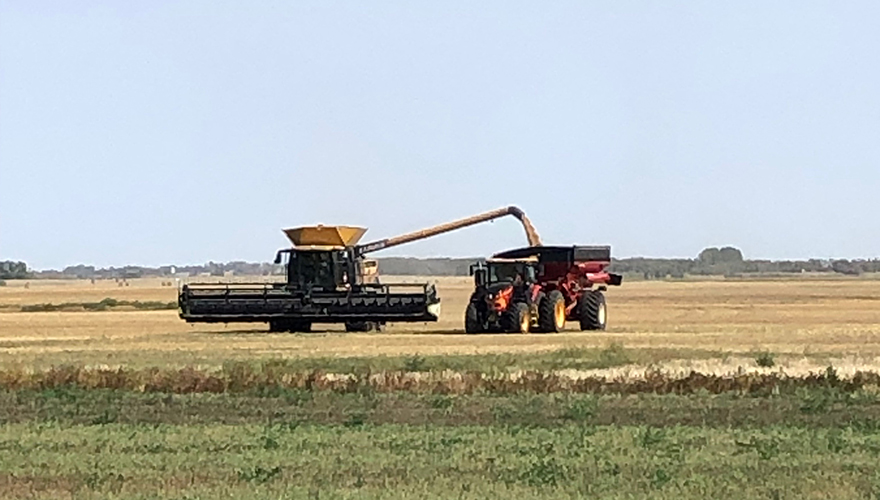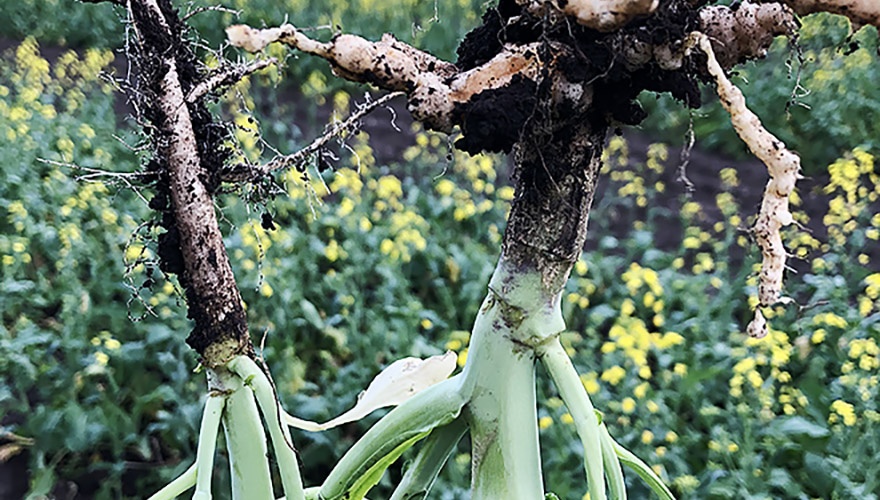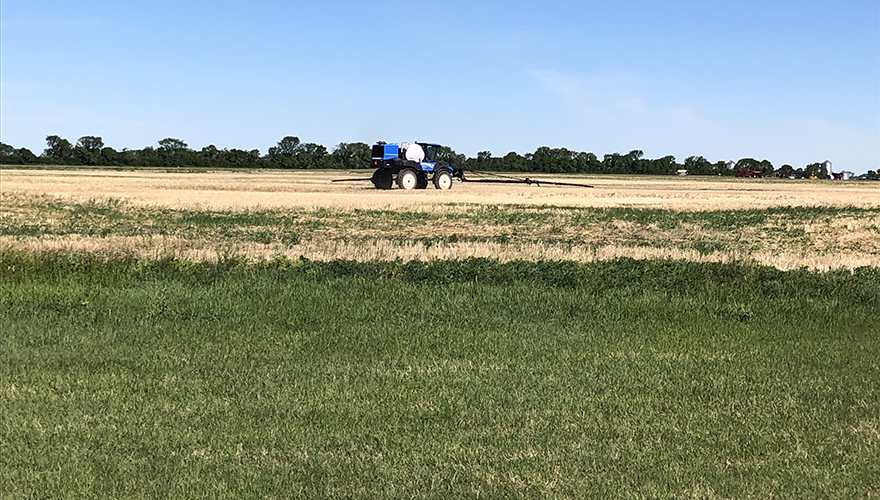Posted June 22, 2017
THE OBJECTIVE OF PRECISION FARMING IS NOT TO REDUCE INPUTS, BUT TO USE THEM MOST EFFECTIVELY
The technology offers a lot of promise, but every piece of equipment needs to speak the same language
Most Prairie grain farmers today are collecting data. Their combines, seeders and sprayers have the tools needed to measure, calculate, evaluate and report just about every activity in the field. But a recent survey indicates only about one-third of those collecting the data are putting it to work. What’s standing in the way?
“Taking the time to prioritize and properly document things such as application rates and field-scouting details, is one of the biggest challenges for growers, whether by entering it directly into the system or using a notepad,” says Scott Anderson, manager of agronomic services for Nutrien Ag Solutions in northwest Saskatchewan. But he says recording it digitally is key, as it’s the only way advisers can access and use the information.
“A lot of the monitors in the machinery can log data which makes it easier. But now we need to work on pulling that data together and using it.”
Kris Klammer, who farms near Vegreville, Alberta agrees, and says it’s question of good data in, good data out.
“Proper setup is a huge part of success. Entering the initial information accurately — field data, correct rates and other information — is the key to having something worthwhile to work with.”
Matt Fagnou, a regional account manager for Nutrien Ag Solutions Echelon precision agriculture services, says the ability to use the information is another barrier.
“If a grower has to spend an hour researching the data and trying to find what he needs, what is the benefit of that? What is he going to get out of it? That is the goal — to make this information as easily accessible as possible and making it so easy to use that growers will include it in their decision-making.”
CAN WE TALK?
Compatibility between equipment types and colours has been an ongoing issue. Nutrien Ag Solutions is one of several companies helping growers make sense of the mass of data being collected.
“None of us are reinventing the wheel in data collection and management, it is just that delivery methods are different. We take all the data and put it back together,” Fagnou says.
The Echelon platform allows data to be sent to a central database, either directly to the ‘cloud’ or by downloading to a flash drive or memory card.
“What we have done is developed a way to collect the data from all their equipment, and turn it into something easily understood, which allows growers to make use of that data with relative ease.”
This includes reports that incorporate seeding, chemical and fertilizer application rates, harvest yield data and even field scouting and agronomic data. These reports can be used when building a crop plan for subsequent years.
AIDING AGRONOMY
Fagnou says the advantage of precision farming technology is that the data allows higher return on a grower’s machinery investment.
“What we can do with the machine to make changes to fertilizer placement, now allows him to be more efficient and get the best return for the money he is investing.
“If a grower is in the field and wants to know what he sprayed there last year, or the year before, he can pull up that information right there on the monitor or smart device.”Anderson says the ability to collect and translate data is changing how agronomists can work with growers.
“Access to good data will let us be a bit more precise in tracking things. If growers can keep better records, and the new equipment makes that a lot easier, I will be able to make better recommendations on management practices.”
Collecting data from across the Prairies, Canada, North America and beyond provides agronomists a more comprehensive look at trends and common regional issues, not just from one operation but from multiple operations. Anderson says this will allow for tracking of resistant diseases weeds or pests, or provide a picture of how varieties work in certain regions versus others.
“The big thing now is collecting the data. To be able to extrapolate anything out of it we need to build the database. The early adopters have now amassed a fair bit of data… how certain varieties perform, specific weed species in different fields, which herbicides were applied. Now we are able to geotag certain areas in fields that are problems and manage those better,” Anderson says.
OPTIMIZING INPUTS
Klammer has put data to work on his farm and 2017 is the third year he will use variable-rate seeding as well as prescriptions for fertilizer and chemical applications.
“The biggest benefit is the ability to maximise your investment and realize the biggest potential of the land base; utilize inputs more effectively. When you do run into a problem area in a field you have a way to go back and see what happened and correct it in the future,” Klammer says.
All three say that using data isn’t about saving money, but about putting the budgeted money to work in the most profitable way possible.
“The biggest benefit of variable rates isn’t to save money on a quarter section. You are already planning to spend x number of dollars on that quarter; you don’t reduce fertilizer or seed but instead you are strategically placing them in the locations that can produce more for the investment,” Klammer says.
Fagnou agrees precision agriculture solutions like Echelon are about making land and crops as profitable as possible.
“The money spent on an annual subscription to gather, translate and put their data to work is an investment that can pay off in improved efficiency, less waste and a healthier bottom line.”
He cites additional benefits from making more use of data. It enables growers to collaborate with workers in the field and confirm seeding and other application rates. Data collection allows growers and agronomists to track issues that may become more widespread, such as blackleg or sclerotinia in canola. The use of data can provide good-news stories from agriculture about responsible land management, judicious use of chemicals and inputs, and improved profitability of the Canadian crop sector.
Anderson says the potential for data use in the agriculture sector is only just starting to be realized. As more growers become engaged in not only collecting and translating data but also building it into their annual crop planning, the industry as a whole will reap the benefits.
FEATURED LINKS
NEWSLETTER
Want to stay caught up in all things agriculture? Sign up for the newsletter and get all the latest news straight to your inbox.
Adjuvants Play Role Herbicide Performance
Posted May 17, 2019





